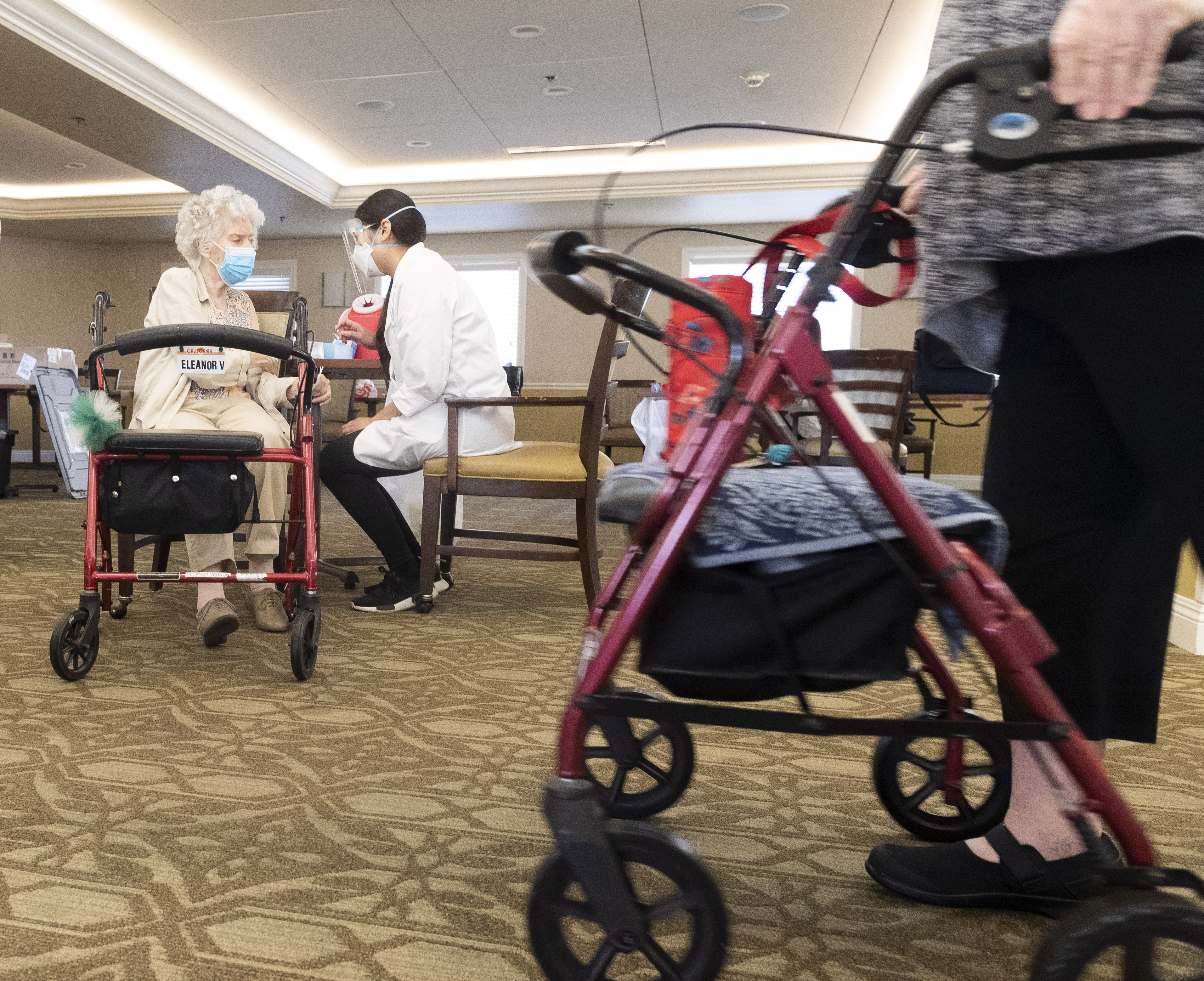AARP Hearing Center
Despite Florida’s having more nursing home residents and staff than most other states, the COVID-19 vaccination rates in its care facilities are among the country’s lowest, a new AARP analysis of government data shows. Roughly 3 in 10 nursing home residents and 3 in 5 health care staffers are not fully vaccinated. The state’s nursing home vaccination rates are well below national averages and are a potentially grim omen for some of Florida’s most vulnerable residents, as COVID-19 cases are again rising.
AARP’s analysis of federal government data shows that 42 percent of the state’s nursing home staff and 68 percent of residents have been fully vaccinated. Only Louisiana has a lower staff vaccination rate, and just Nevada and Arizona have lower resident vaccination numbers. Yet Florida boasts more than 700 nursing homes and has among the country’s largest resident and staff populations.

Experts warn that even vaccinated residents and staff are at increased risk of infection, given the number of unvaccinated people with whom they regularly interact. Vaccines are not foolproof shields against COVID-19, especially for older adults. And less than 48 percent of Florida’s population is fully vaccinated.
“If you have an elderly relative, they have a chance — even if they’re vaccinated — of not developing a decent immune response to this virus,” says Thomas Unnasch, a distinguished health professor at the University of South Florida’s College of Public Health. “With half the people [in the state] running around not vaccinated, it’s scary, I think.”
Nationally, 57 percent of nursing home staffers and 78 percent of residents have been vaccinated. The nursing home industry set a goal of vaccinating at least 75 percent of its workforce by June. Yet only 20 percent of U.S. nursing homes — and a mere 5 percent of Florida facilities — had reached that benchmark by the four weeks ending June 20, AARP’s analysis shows. “You would hope for rates of 80 to 90 percent for staff and residents,” says Charlene Harrington, a nursing home researcher at the University of California, San Francisco.
Long-term care residents account for nearly a third of the more than 600,000 COVID-19 deaths the U.S. has seen since the onset of the pandemic. More than 650,000 nursing home residents have been infected, and in excess of 130,000 have died. Infections and deaths have declined nationwide and in Florida in recent months, with many experts pointing to vaccinations and a degree of herd immunity as contributing factors.
In the four weeks ending June 20, an average of 26 percent of Florida nursing homes reported a new COVID-19 case among their staff, the analysis shows. That’s down from 48 percent in the four weeks prior but is still twice the national average of 13 percent. The percentage of facilities reporting resident cases, similarly, dropped from 19 percent to 11 percent but is still significantly higher than the 5 percent national average.
“It’s troubling news that Florida continues to lag behind the nation in the percent of fully vaccinated health care workers in our nursing homes,” says Jeff Johnson, AARP Florida’s state director. “If the majority of these workers remain unvaccinated, the spread of COVID-19 will persist, endangering the lives of everyone involved.”
A recent spike in COVID-19 cases throughout Florida has yet to bleed into self-reported nursing home data. But experts say they are bracing for another wave of infections, with Florida accounting for 20 percent of all new COVID-19 cases reported in the U.S. last week. More than 7,000 new cases were reported in Florida on July 15, bringing the seven-day average north of 5,600. Two weeks before, on July 1, only 2,400 new cases were reported, with a seven-day average of less than 1,700.
“A lot of the people in the medical professions around here that I’ve been talking to are starting to see a lot more sick people showing up at the hospitals and emergency rooms and urgent- care facilities,” Unnasch says. “It’s concerning.”
AARP's analysis, conducted by the AARP Public Policy Institute and the Scripps Gerontology Center at Miami University in Ohio, draws primarily on data acquired from the Nursing Home COVID-19 Public File by the CMS. Most nursing homes are federally certified and are required to submit data to the government each week.
The ongoing analysis captures data only from federally certified nursing homes, not from all long-term facilities (such as assisted living, independent living, memory care and others), as some other tallies do. An updated analysis will be released next month as new federal data become available. Read more about the analysis.
Also of Interest:































































